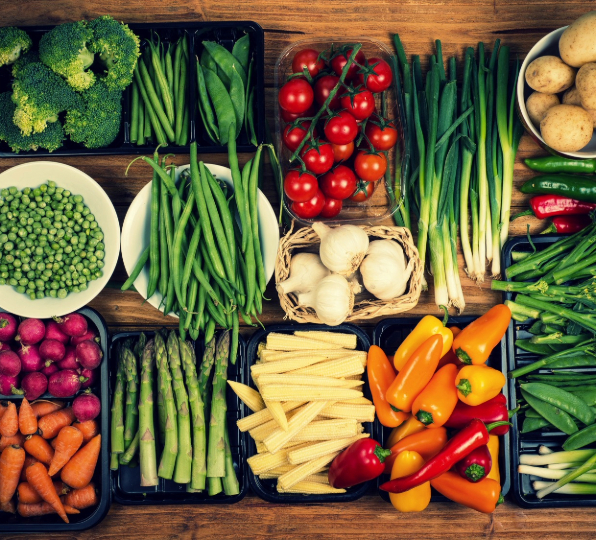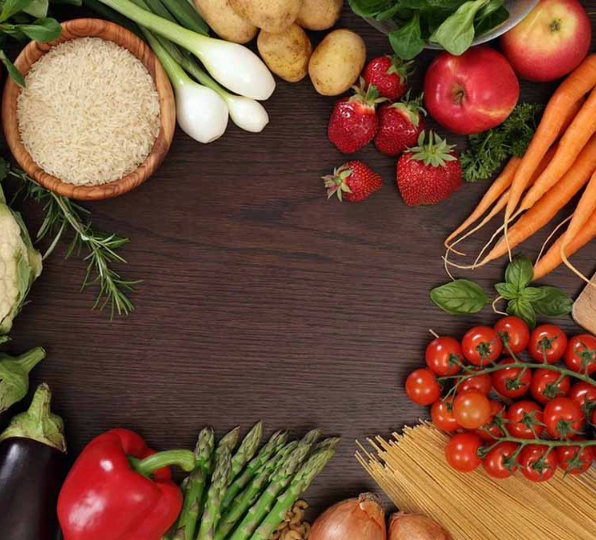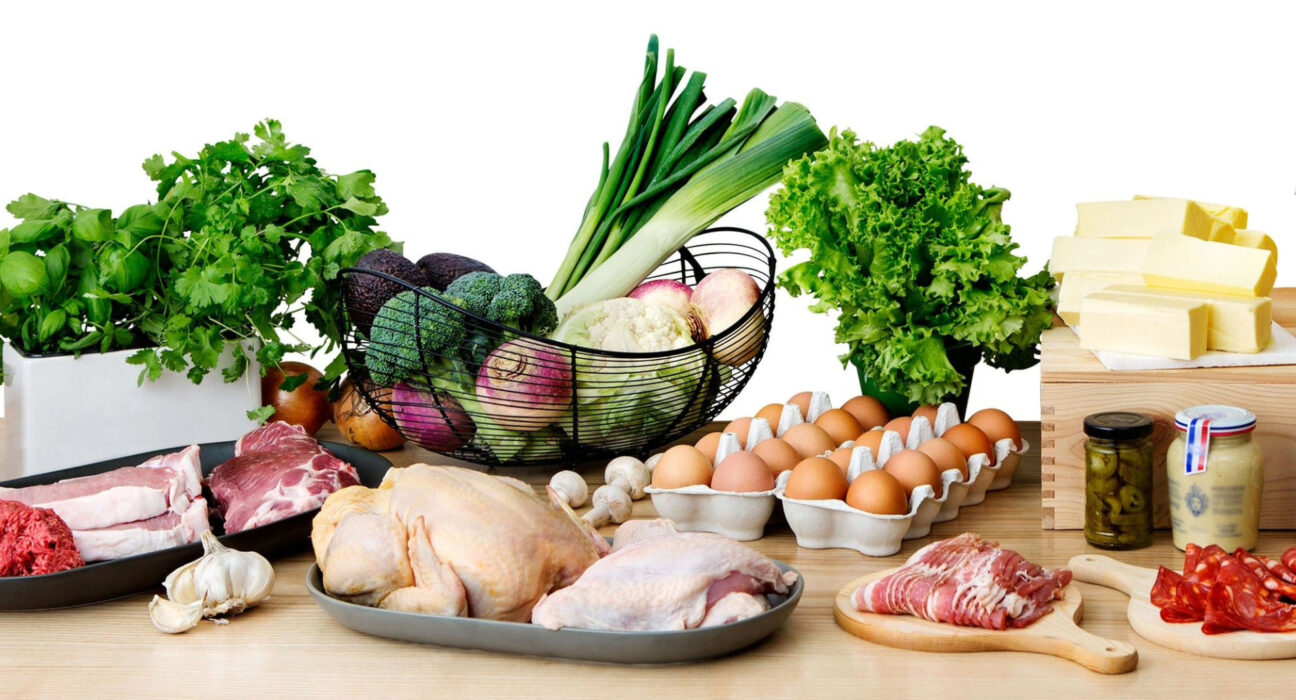Introduction:
Even though the ketogenic diet usually places a strong emphasis on fats and proteins, including low-carb vegetables is crucial to getting the vital nutrients, fiber, and variety that your body needs. The top 10 keto-friendly veggies that will improve your meals without increasing your daily carb intake are covered in this guide.
1. Spinach
Spinach is a nutrient-packed leafy green vegetable that offers a multitude of health benefits and culinary versatility. Here’s why spinach is a valuable addition to any diet:
- Nutritional Profile: Spinach is renowned for its impressive array of vitamins and minerals. It is particularly high in vitamins A, C, and K, which support immune function, collagen production, and bone health, respectively. Additionally, spinach is rich in folate, iron, and magnesium, essential nutrients that play crucial roles in energy metabolism, red blood cell production, and muscle function.
- Low-Carb Content: For those following low-carb or ketogenic diets, spinach is an excellent choice due to its low carbohydrate content. With approximately 1 gram of net carbs per cup of raw spinach, it can be enjoyed freely as a nutrient-dense, low-calorie option for adding volume and flavor to meals without significantly impacting carbohydrate intake.
- Versatility: Spinach’s mild flavor and tender texture make it incredibly versatile in the kitchen. It can be enjoyed raw in salads, sandwiches, and wraps, or cooked in a variety of dishes such as sautés, stir-fries, soups, omelets, and quiches. Spinach also blends seamlessly into smoothies and juices, adding a nutritional boost without overpowering other ingredients.
Whether you’re looking to boost your intake of essential vitamins and minerals, maintain a low-carb lifestyle, or add vibrant color and flavor to your meals, spinach is a nutritious and adaptable ingredient that can be incorporated into a wide range of recipes. With its health-promoting properties and culinary flexibility, spinach deserves a prominent place on your plate.
2.Broccoli
Broccoli, a member of the cruciferous vegetable family, is celebrated for its exceptional nutritional profile and culinary versatility. Here’s why broccoli deserves a spot in your diet:
- Nutritional Powerhouse: Broccoli is packed with essential vitamins and minerals that promote overall health and well-being. It is particularly rich in vitamins C and K, which play vital roles in immune function, collagen synthesis, and bone health. Additionally, broccoli contains folate, a B-vitamin important for DNA synthesis and cell division, as well as fiber, which supports digestive health and helps maintain a feeling of fullness.
- Low-Carb Content: With approximately 4 grams of net carbs per cup of chopped broccoli, this cruciferous vegetable is a suitable choice for those following low-carb or ketogenic diets. Its relatively low carbohydrate content allows individuals to enjoy generous servings of broccoli while keeping their carbohydrate intake in check, making it a valuable addition to a variety of dietary approaches.
- Culinary Versatility: Broccoli’s mild flavor and firm texture make it incredibly versatile in the kitchen. It can be enjoyed raw in salads or crudité platters for a refreshing crunch, or cooked using various methods such as steaming, roasting, or sautéing. Broccoli is also a popular addition to stir-fries, soups, stews, and casseroles, where it adds vibrant color, texture, and nutritional value to the dish.
3.Cauliflower
Cauliflower, a cruciferous vegetable, has gained immense popularity for its nutritional benefits and remarkable versatility in the kitchen. Here’s why cauliflower is a standout choice for health-conscious and creative cooks:
- Nutritional Powerhouse: Cauliflower boasts a robust nutritional profile, providing a rich source of essential vitamins and minerals. It is particularly high in vitamin C, an antioxidant that supports immune function and skin health. Cauliflower also contains folate, crucial for DNA synthesis and cell division, and choline, which plays a role in brain health and metabolism.
- Low-Carb Content: With only around 2 grams of net carbs per cup of chopped cauliflower, this vegetable is a low-carb superstar. For individuals following low-carb or ketogenic diets, cauliflower is a versatile and satisfying option that can be incorporated into various dishes without significantly impacting carbohydrate intake.
- Versatility in the Kitchen: One of cauliflower’s most remarkable features is its adaptability to various culinary roles. It can be transformed into a rice or mashed potato substitute for those seeking low-carb alternatives. Simply pulse cauliflower florets in a food processor to achieve a rice-like or creamy texture. Roasting cauliflower enhances its natural sweetness and adds a delicious caramelized flavor, making it an excellent side dish. Additionally, cauliflower can be blended into soups, purees, or sauces to add creaminess without the need for high-carb ingredients.
- Cauliflower Rice: Replace traditional rice with cauliflower rice for a low-carb and nutrient-packed alternative. Simply grate or process cauliflower into rice-sized pieces and sauté for a few minutes. This versatile substitute pairs well with a variety of dishes, from stir-fries to curries.
- Cauliflower Mash: Create a creamy and comforting mashed potato alternative by steaming or boiling cauliflower until tender and mashing it with your preferred seasonings. The result is a satisfying side dish that is lower in carbohydrates and higher in nutrients.
4.Zucchini
Zucchini, also known as courgette, is a versatile and nutritious summer squash that offers a wide range of culinary possibilities and health benefits. Here’s why zucchini is a standout ingredient in both low-carb and traditional diets:
- Nutritional Profile: Zucchini is a nutrient-rich vegetable that provides an array of essential vitamins, minerals, and antioxidants. It is a good source of vitamin C, an antioxidant that supports immune function and collagen production. Zucchini also contains potassium, an electrolyte crucial for maintaining fluid balance and regulating blood pressure. Additionally, zucchini is rich in antioxidants like carotenoids and flavonoids, which help protect cells from oxidative damage and reduce the risk of chronic diseases.
- Low-Carb Content: With approximately 2 grams of net carbs per cup of sliced zucchini, this summer squash is a low-carb staple for individuals following ketogenic or low-carb diets. Its relatively low carbohydrate content allows for generous servings of zucchini while keeping carbohydrate intake in check, making it a versatile ingredient for a variety of dishes.
- Culinary Options: Zucchini’s mild flavor and tender texture make it a versatile ingredient that can be prepared in numerous ways. One popular culinary option is spiralizing zucchini to create “zoodles” – long, noodle-like strands that can be used as a low-carb substitute for pasta. Zucchini can also be sliced and grilled, baked, or sautéed as a flavorful side dish or main course. Additionally, zucchini can be stuffed with a variety of fillings, such as ground meat, cheese, herbs, and spices, for a satisfying and nutritious meal.
- Zucchini Noodles: Substitute traditional pasta with zucchini noodles for a low-carb and gluten-free alternative. Simply use a spiralizer or julienne peeler to create long strands of zucchini, then cook briefly in a skillet or microwave until tender. Top with your favorite pasta sauce, pesto, or stir-fry for a nutritious and satisfying meal.
- Grilled Zucchini: Enhance the natural sweetness and flavor of zucchini by grilling slices or spears on an outdoor grill or grill pan. Drizzle with olive oil, season with herbs and spices, and grill until tender and lightly charred. Grilled zucchini makes a delicious side dish or topping for salads, sandwiches, and pizzas.
- Baked Zucchini: Bake slices or halves of zucchini in the oven for a healthy and flavorful side dish or snack. Simply season with salt, pepper, and your favorite herbs or spices, then roast until tender and golden brown. Baked zucchini can be served hot or cold and pairs well with a variety of sauces and dips.
5.Kale
Kale, a leafy green vegetable belonging to the Brassica oleracea family, is renowned for its exceptional nutritional profile and versatility in the kitchen. Here’s why kale is a standout ingredient in both low-carb and traditional diets:
- Nutritional Powerhouse: Kale is packed with essential vitamins, minerals, and antioxidants that contribute to overall health and well-being. It is particularly rich in vitamins A, C, and K, which play key roles in immune function, collagen synthesis, and bone health, respectively. Additionally, kale contains calcium, an essential mineral for bone strength and muscle function, as well as antioxidants like flavonoids and carotenoids, which help protect cells from oxidative damage and reduce inflammation.
- Low-Carb Content: With only about 2 grams of net carbs per cup of chopped kale, this leafy green is a low-carb superstar. For individuals following ketogenic or low-carb diets, kale is a nutrient-dense option that can be enjoyed liberally without significantly impacting carbohydrate intake. Its low-carb content makes it a versatile ingredient for salads, sautés, soups, and snacks.
- Preparation Ideas: Kale’s sturdy leaves and earthy flavor make it a versatile ingredient that can be prepared in various ways. Here are some popular preparation ideas:
- Raw in Salads: Enjoy kale raw in salads for a refreshing and nutrient-packed meal. Simply remove the tough stems, chop or tear the leaves into bite-sized pieces, and toss with your favorite salad ingredients and dressing. Massaging kale with a bit of olive oil and lemon juice can help soften the leaves and enhance their flavor.
- Sautéed with Garlic and Olive Oil: Sautéing kale with garlic and olive oil is a quick and delicious way to enjoy this leafy green as a side dish or addition to pasta, grains, or protein. Heat olive oil in a skillet, add minced garlic and chopped kale, and cook until wilted and tender. Season with salt, pepper, and a splash of lemon juice for extra flavor.
- Baked into Crispy Kale Chips: Transform kale into crispy, savory chips for a nutritious and satisfying snack. Simply toss kale leaves with olive oil, salt, and your favorite seasonings, then spread them out in a single layer on a baking sheet. Bake in a preheated oven until crispy and lightly browned, then enjoy as a crunchy snack or topping for soups and salads.


Conclusion:
Incorporating a variety of keto-friendly vegetables into your diet is essential for maintaining optimal nutrition, promoting digestive health, and adding flavor and texture to your meals. Experiment with these top 10 options to create delicious and satisfying low-carb dishes that support your ketogenic lifestyle.












